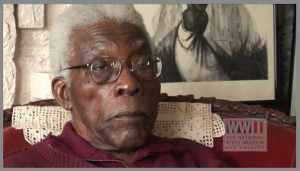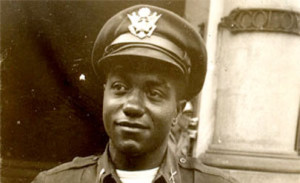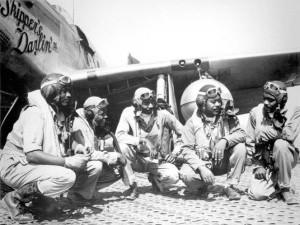Teaching Resources for Black History Month
At the start of World War II, there were less than 4,000 African Americans serving in the United States military. By 1945, however, there were more than 1.2 African Americans contributing to the war effort on the Home Front and in the European and Pacific Theaters. The personal stories behind these figures present teachers with a dynamic opportunity to incorporate African American histories and perspectives into the classroom.

Image of Mr. Eugene Tarrant’s oral history interview from http://ww2online.org.
One of the most compelling ways to teach about the participation of African Americans in WWII is through the use of oral histories. The Museum’s new Digital Collections website at http://ww2online.org is an excellent source for teachers and students who are looking for primary sources about the WWII experience. The Digital Collections site currently contains 150 oral histories and more than 5,000 photographs from the Museum’s collection. Among these are interviews with former Tuskegee Airmen John Leahr, William Holloman III and Charles McGee, along with men from other branches of the military like Joseph Hairston (Army), Wallace Baptiste (Navy), and Eugene Tarrant (Navy). Together, these oral histories provide a compelling look at the state of race relations in the United States before, during, and after WWII, and demonstrate the strength of individuals to persevere against discrimination.
Another great resource for primary and secondary sources on this topic is the Museum’s Focus On African Americans in WWII feature. This page showcases original photographs and film footage of African Americans contributing to the war effort on the Home Front and on the battlefront in Europe and the Pacific. It highlights the contributions of the Tuskegee Airmen , contains suggested lesson plans and book lists for the classroom and features an interview with Medal of Honor recipient Vernon Baker.
An interesting primary source analysis activity for African American History Month can be constructed for the classroom by asking students to compare and contrast the oral histories of Vernon Baker and other African American veterans from the Digital Collections site. You can start by using the suggested primary sources questions below and build upon or change the activity based on the amount of classroom time you have, student interest, and other available historical materials at your disposal.
Suggested Oral History Questions:
1. Where was the interviewee born?
2. What was their life like before the start of WWII and what opportunities were available to them?
2. How did they enter the military? What branch of the military did they serve in and why?
3. Describe their military service. What are some examples of discrimination that they encountered during the war ? How did the interviewee respond to or challenge these situations?
4. What was their life like after the war?
5. What impact do they think that African American participation in the war had upon changing racial attitudes and opportunities in America for themselves and others?
6. Compare your person’s oral history with another veteran’s WWII story. What similarities and differences exist between these two experiences?
7. How does studying oral histories enhance your understanding of WWII?

Picture of First Lt. Vernon Baker. Baker was one of only seven African Americans to receive the Medal of Honor for their WWII service.
- Posted :
- Post Category :
- Tags : Tags: African Americans in WWII
- Follow responses to this entry through the RSS 2.0 feed. You can skip to the end and leave a response. Pinging is currently not allowed.





Leave a Reply